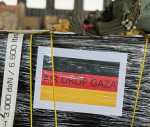You are here
Summing up the Trump summits
Jul 31,2018 - Last updated at Jul 31,2018
NEW YORK — US President Donald Trump’s summits with North Korean leader Kim Jong-un in Singapore and Russian President Vladimir Putin in Helsinki are history, as is the G-7 summit in Quebec and the NATO summit in Brussels. But already there is talk of another Trump-Putin summit in Washington, DC, sometime later this year. Some 30 years after the end of the Cold War, a four-decade era often punctuated by high-stakes, high-level encounters between American presidents and their Soviet counterparts, summits are back in fashion.
It should be noted that the word “summit” is imprecise. It can be used for high-level meetings of friends as well as foes. Summits can be bilateral or multilateral. And there is no widely accepted rule about when a meeting becomes a summit. More than anything, the term conveys a sense of significance that exceeds that of a run-of-the-mill meeting.
The principal reason summits are back is that they constitute Trump’s favoured approach to diplomacy. It is not hard to explain why. Trump views diplomacy in personal terms. He is a great believer in the idea, however debatable, that relationships between individuals can meaningfully shape the relationship between the countries they lead, even transcending sharp policy differences. He is of the world of stagecraft more than statecraft, of pageantry more than policy.
Trump embraces summitry for a number of related reasons. He is confident that he can control, or at least succeed in, such a format. Much of his professional career before entering the White House was in real estate, where he apparently got what he wanted in small meetings with partners or rivals.
Trump has also introduced several innovations into the summit formula. Traditionally, summits are scheduled only after months, or even years, of careful preparation by lower-ranking officials have narrowed or eliminated disagreements. The summit itself tends to be a tightly scripted affair. Agreements and communiqués have been mostly or entirely negotiated, and are ready to be signed. There is room for some give and take, but the potential for surprise is kept to a minimum. Summits have mostly been occasions to formalise what has already been largely agreed.
But Trump has turned this sequence around. Summits for him are more engine than caboose. The summits with both Kim and Putin took place with minimal preparation. Trump prefers free-flowing sessions in which the written outcome can be vague, as it was in Singapore, or non-existent, as it was in Helsinki.
This approach holds many risks. The summit could blow up and end in recrimination and no agreement. This has been a consistent characteristic of Trump’s meetings with America’s European allies, gatherings that have been dominated by US criticism of what Europe is doing on trade or not doing in the way of defence spending.
Moreover, a summit that ends without a detailed written accord may initially seem successful, but with the passage of time proves to be anything but. Singapore falls under this category: claims that the summit achieved North Korea’s commitment to de-nuclearise are increasingly at odds with a reality that suggests Kim has no intention of giving up his country’s nuclear weapons or ballistic missiles. Helsinki has the potential to be even worse, as there is no written record of what, if anything, was discussed, much less agreed, during Putin and Trump’s two-hour, one-on-one discussion.
A third risk of summits that produce vague or no agreements is that they breed mistrust with allies and at home. South Korea and Japan saw their interests compromised in Singapore, and NATO allies fear theirs were set aside in Helsinki. With members of Congress and even the executive branch in the dark about what was discussed, effective follow-up is all but impossible. Future administrations will feel less bound by agreements they knew nothing about, making the United States less consistent and reliable over time.
This last set of risks is exacerbated by Trump’s penchant for one-on-one sessions without note takers. This was the case in both Singapore and Helsinki. Interpreters in such meetings are no substitute. Interpreters must translate not only words, but also nuances of tone, to communicate what is said. But they are not diplomats who know when an error requires correction or an exchange calls for clarification. The absence of any authoritative, mutually agreed record of what was said and agreed to is a recipe for future friction between the parties and mistrust among those not present.
To be clear, the problem is not with summits per se. History shows they can defuse crises and produce agreements that increase cooperation and reduce the risk of confrontation. There is a danger, though, in expecting too much from summits, especially in the absence of sufficient preparation or follow-up. In such cases, summits merely increase the odds that diplomacy will fail, in the process contributing to geopolitical instability and uncertainty rather than mitigating it. At a time when the risks to global peace and prosperity are numerous enough, such outcomes are the last thing we need.
Richard N. Haass is president of the Council on Foreign Relations and author of “A World in Disarray: American Foreign Policy and the Crisis of the Old Order.” Copyright: Project Syndicate, 2018. www.project-syndicate.org











